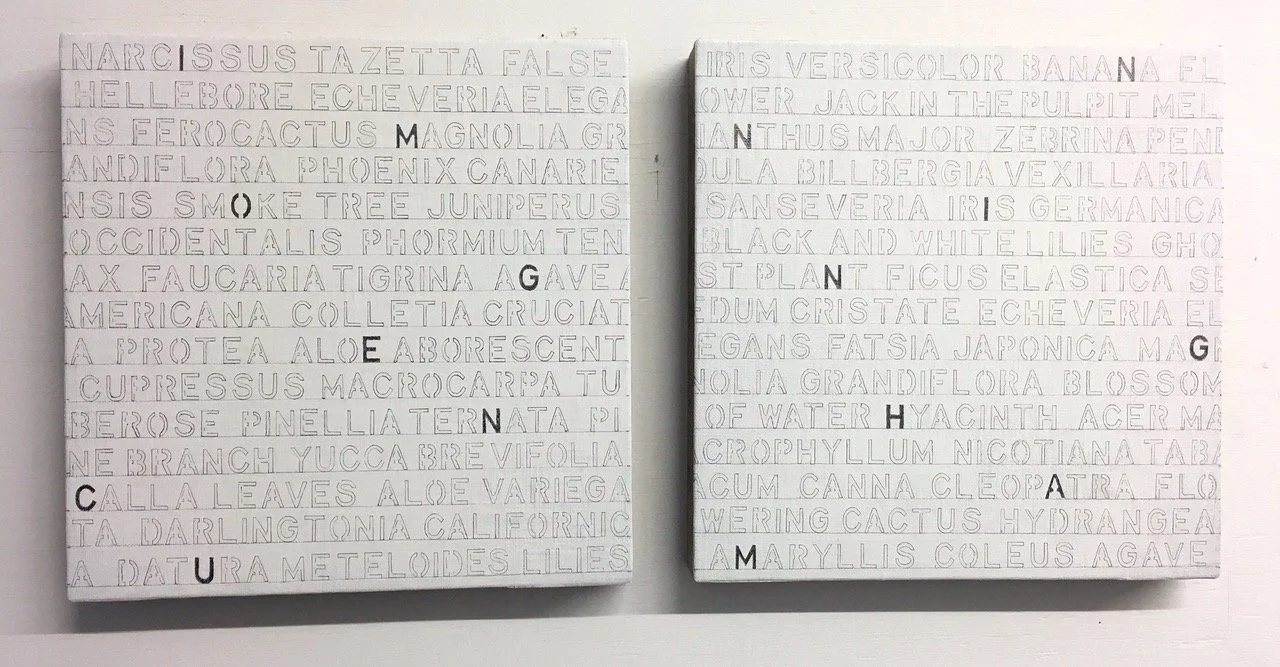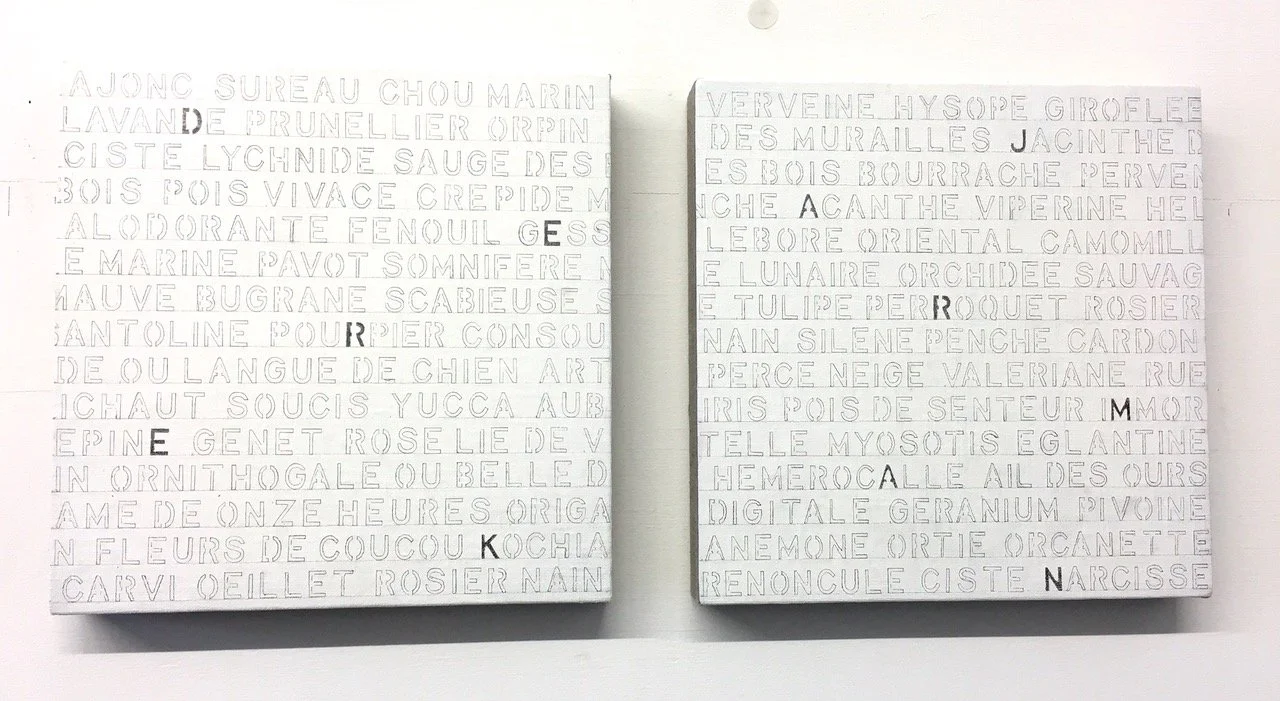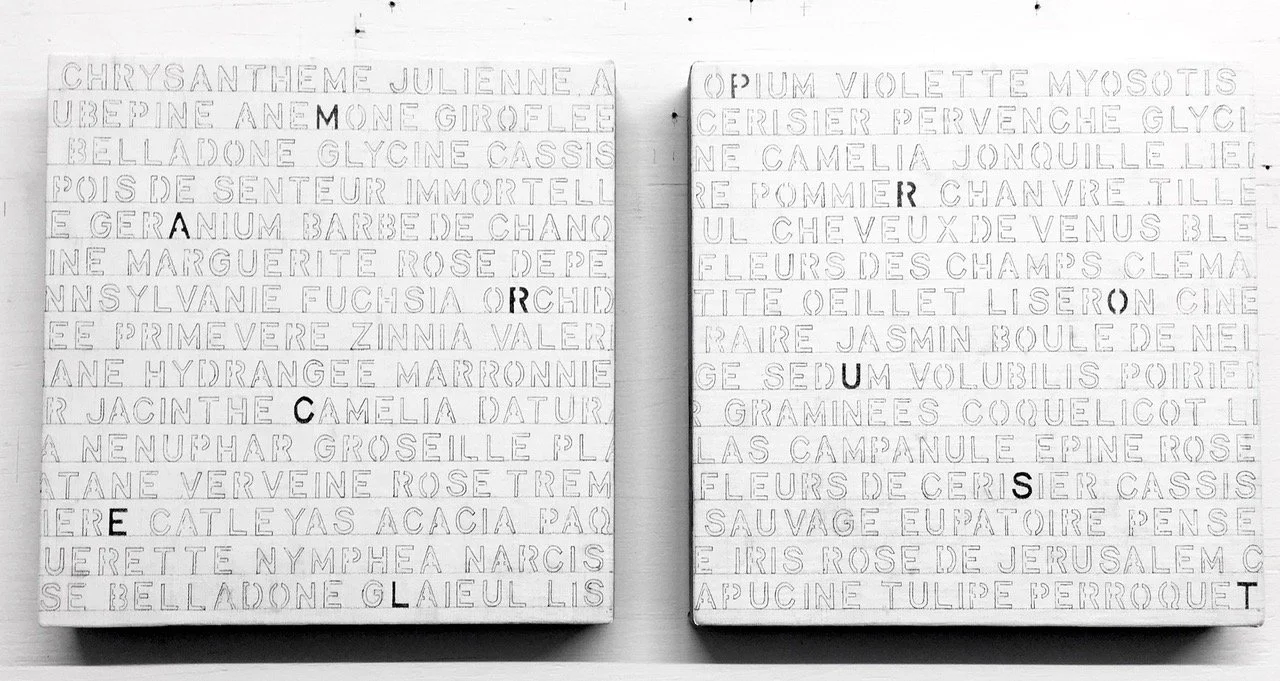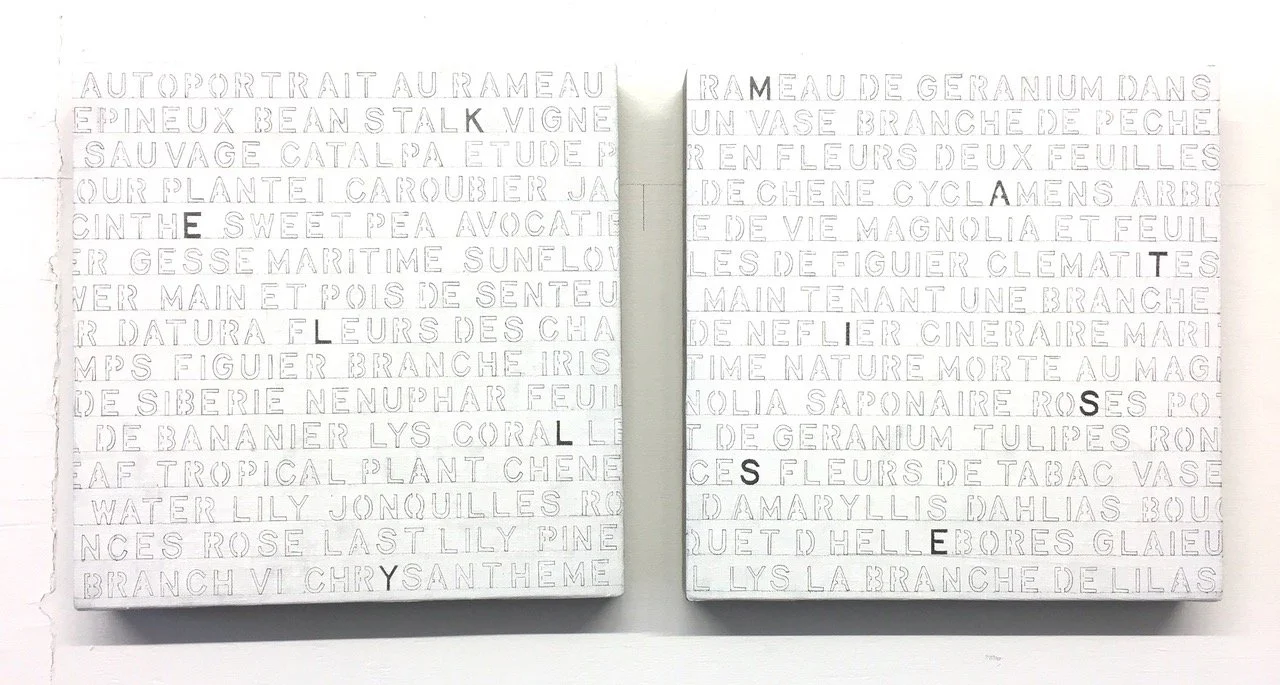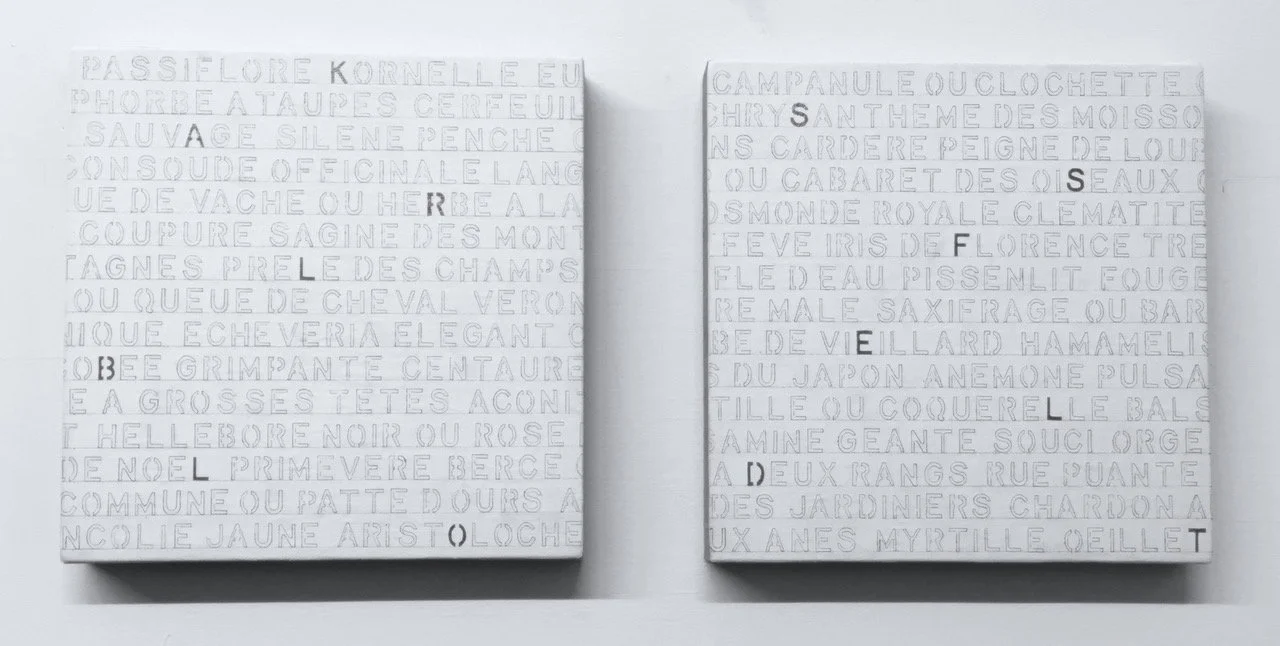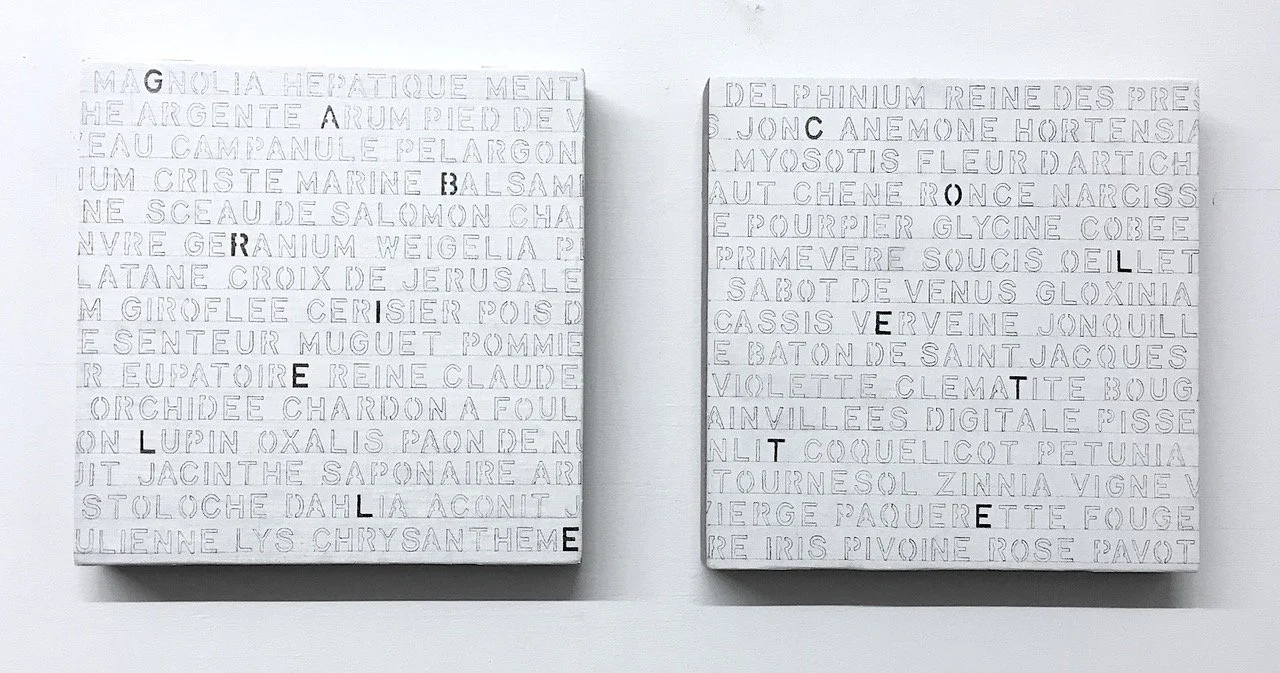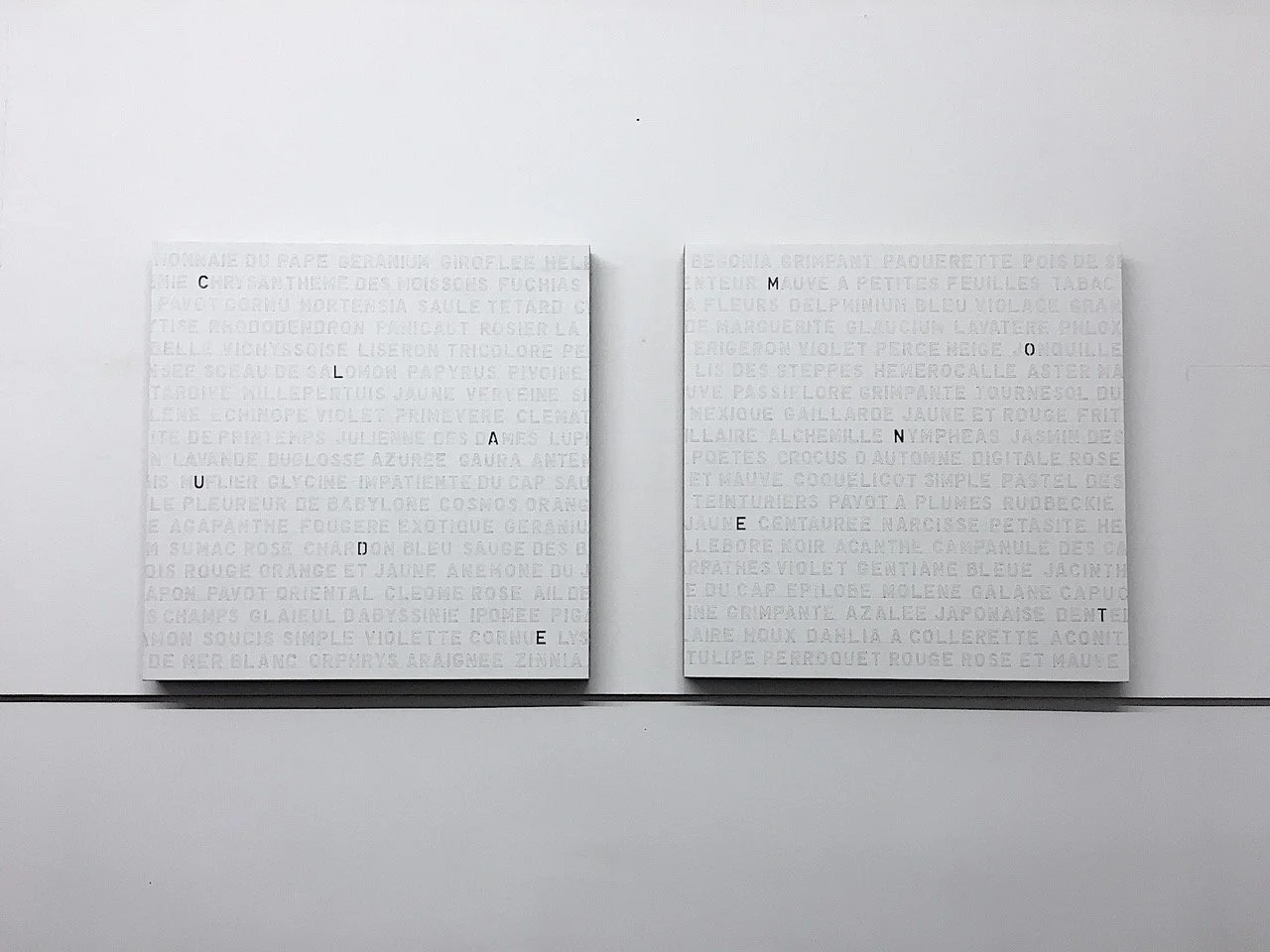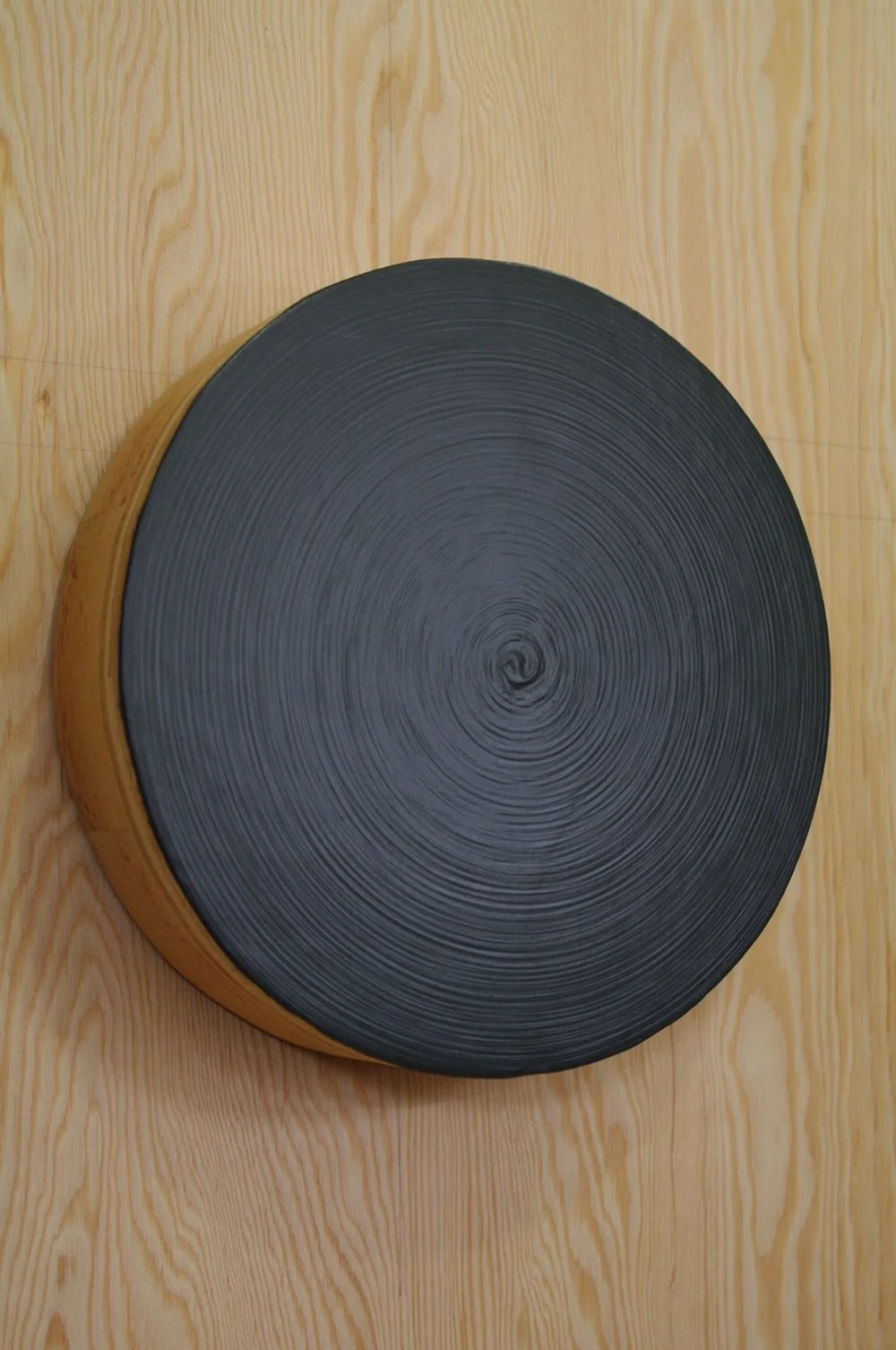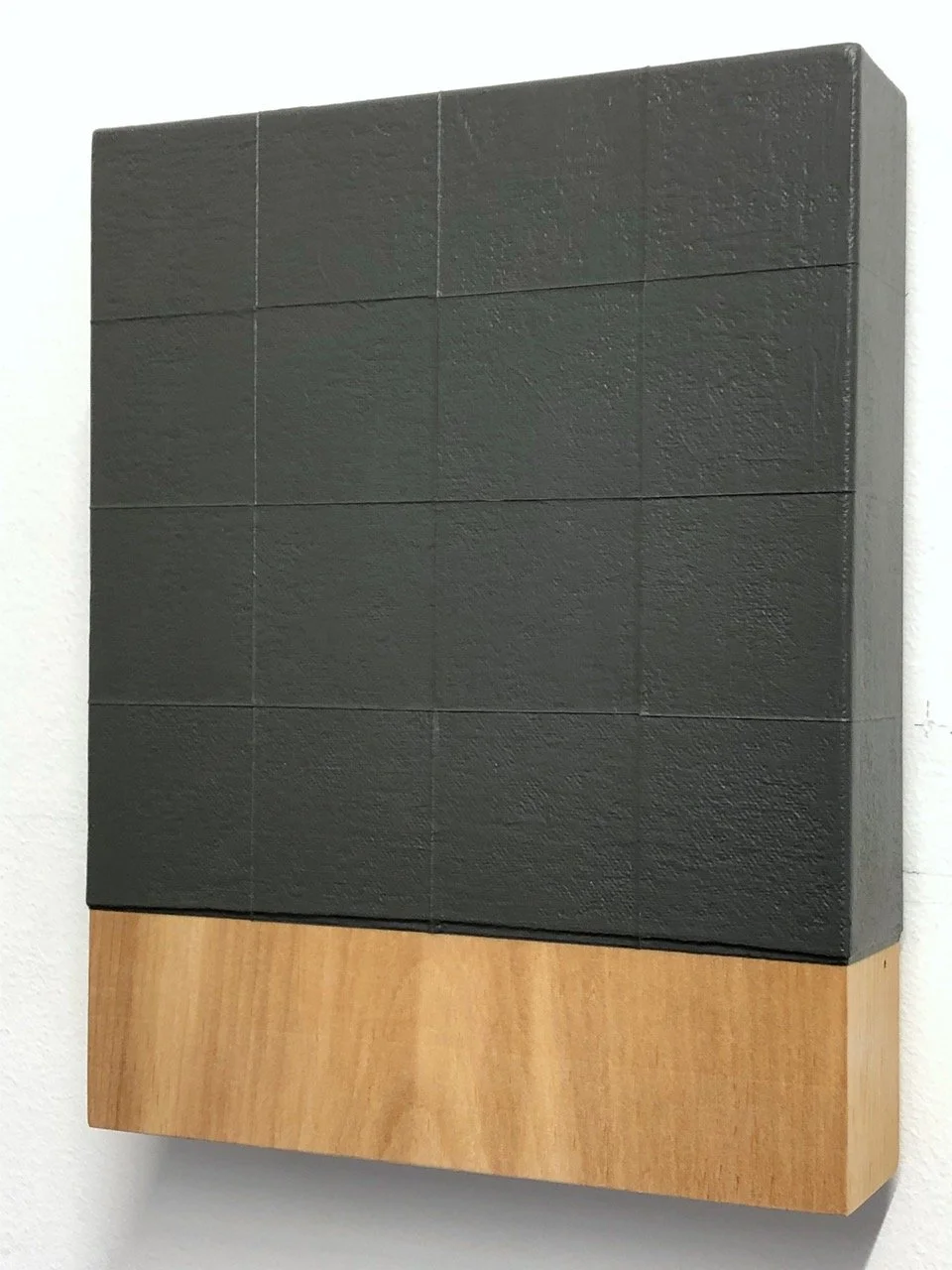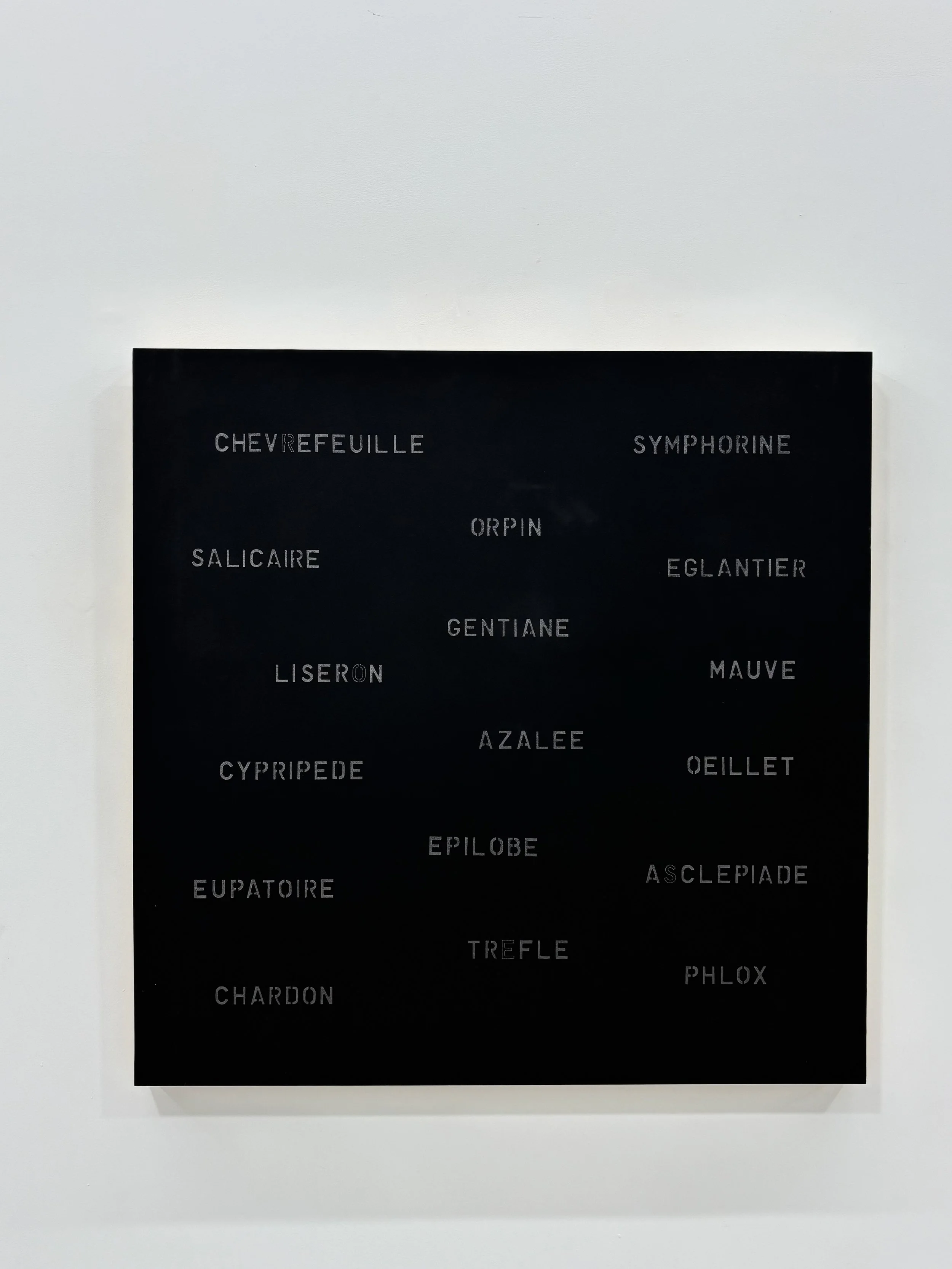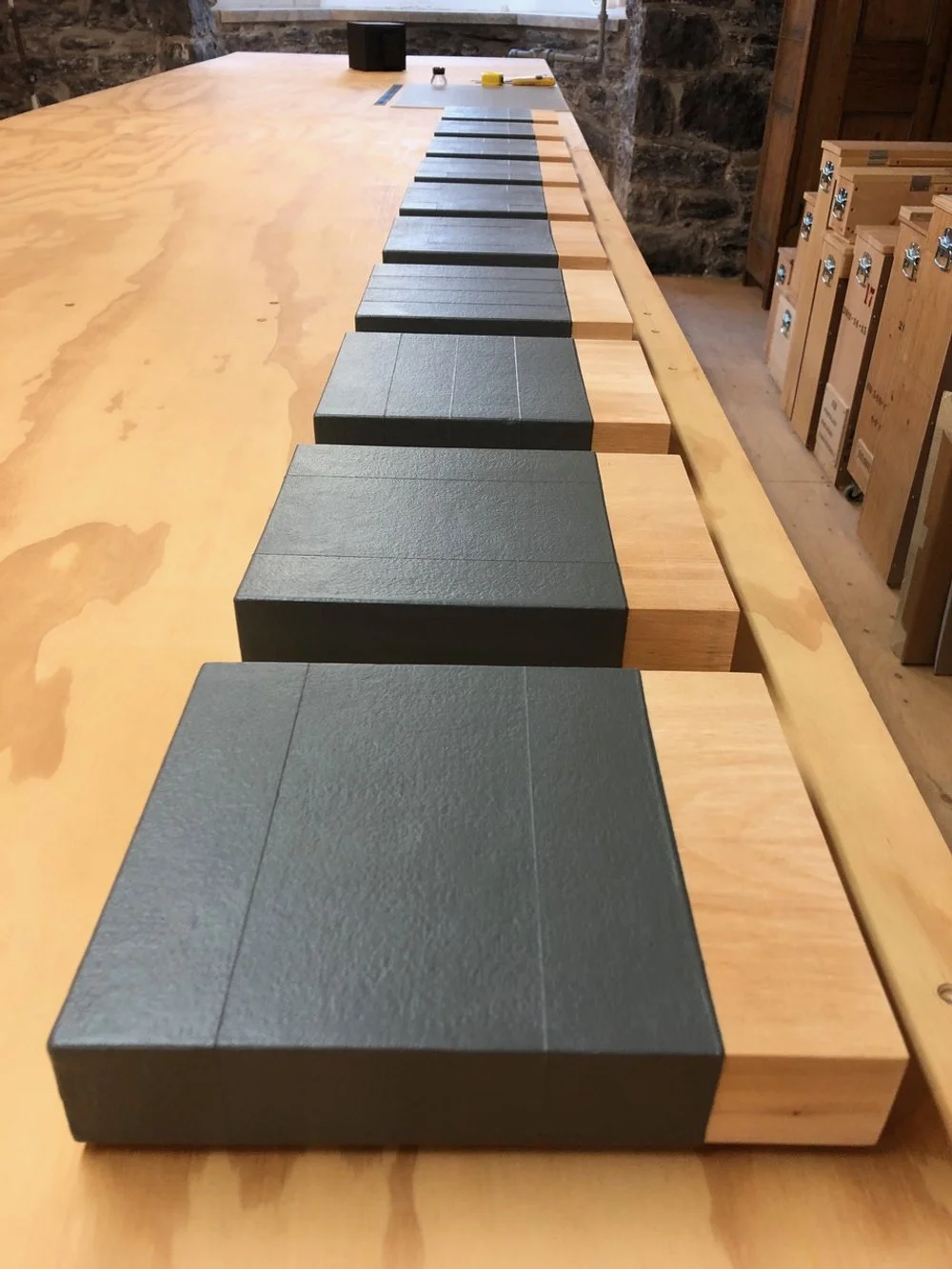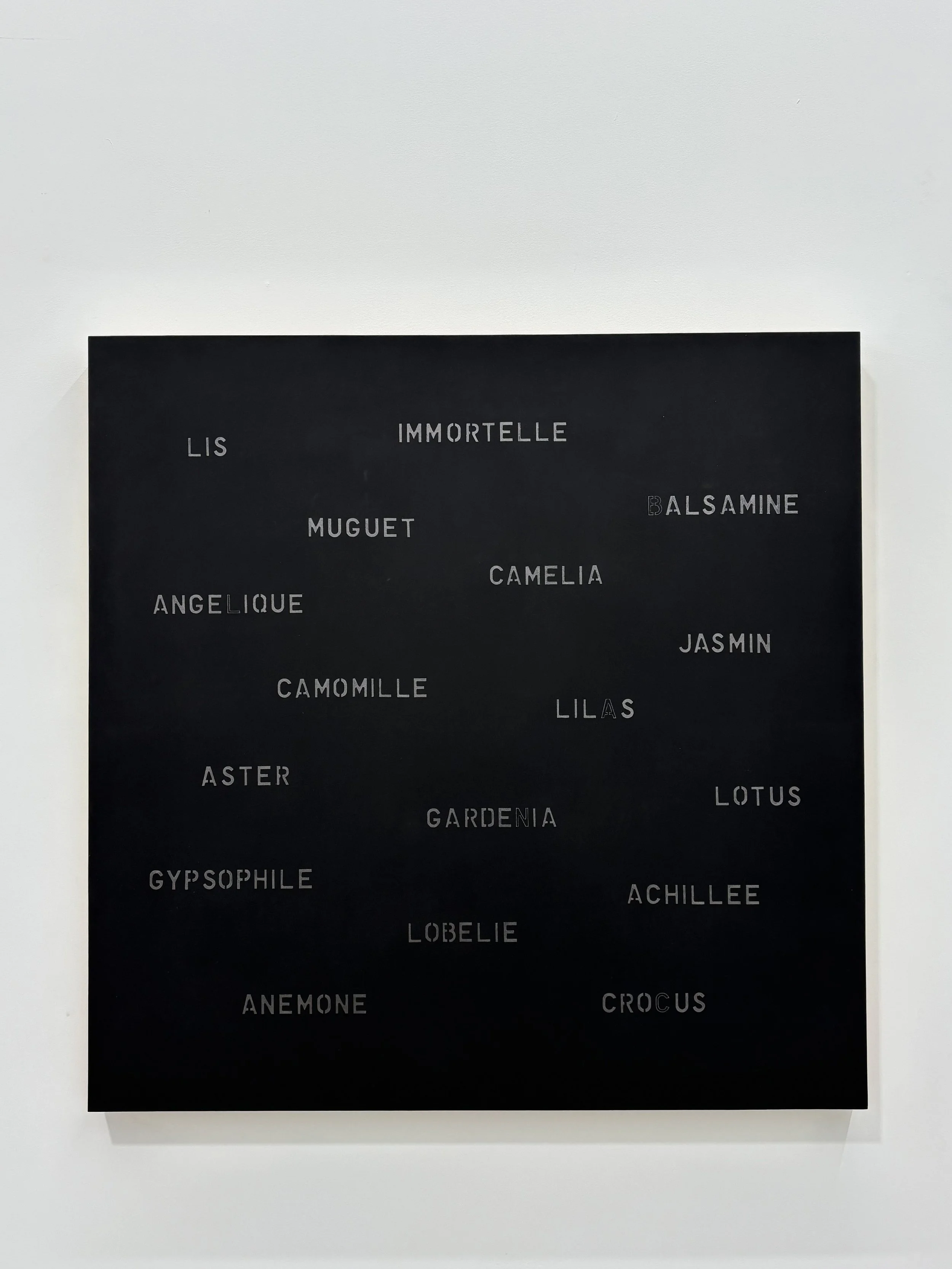Monique Mongeau et Guy Pellerin
DUO
From November 1 to December 22
Galerie Nicolas Robert is proud to present DUO, a joint exhibition bringing together artists Monique Mongeau and Guy Pellerin for the fourth time in their forty-five-year careers. Through four previously unseen series, the exhibition highlights the distinct practices of this duo, partners in both life and artistic inquiry for over forty years. In this new encounter, the artists present monochromatic and minimalist works with distinct yet complementary iconographies.
The exhibition opens with two emblematic works that lay the foundations of their pictorial explorations. In Fougères (2011), a painting drawn from Monique Mongeau’s herbarium—an impressive collection of plants and flowers begun in the 1990s—the artist deliberately introduces fragility at the heart of representation. The imperfect or truncated parts of the plants counterbalance the solidity of the wooden support, affirming a tension between the delicacy of the living and the permanence of pictorial matter. In dialogue, n° 232 (1994) by Guy Pellerin, part of a series of circular paintings begun during Découverte 94 at the Parc des Expositions in Paris, inscribes time into the very substance of painting. Concentric grooves, drawn on a tondo using a turntable, record a simple, repetitive, almost meditative gesture. Through this process, the artist succeeds in fixing the fleeting moment of the pictorial gesture—a way of anchoring the passage of time in colour and form.
Monique Mongeau’s ongoing research into vegetal motifs and the natural world continues in two new series. In L’herbier au carré (2018), the artist presents a monochrome black work in which the named colour is absent; it manifests instead through cut-out letters. Here, the word becomes image—the plant names form the composition and embody the colour they evoke. In L’herbier de [ ] (2020), each diptych gathers a nomenclature of plant names in reference to an artist’s work or universe—those of Marcel Proust, Claude Monet, and Gabrielle Colette, among others. These pieces extend Mongeau’s reflections on memory, trace, and the endurance of the living within pictorial matter.
Renowned for his abstract and monochrome paintings, Guy Pellerin pursues a line of inquiry he calls chronochromatism—a way of anchoring colour in time and in the memory of place. The artist reintroduces reference into abstract painting, a genre that, since the early twentieth century, has sought to affirm colour for its own sake. In Pellerin’s work, each hue carries the memory of an encounter or lived experience: the colours of façades along Route 132, of Copenhagen houses, or of everyday landscapes become pictorial material and traces of time.
In the series n° 499 — Mesures (2021), ten small works explore the construction of surfaces through a checkerboard system whose proportions correspond to the thickness of the support. The painting literally builds itself, one square at a time, in a palette derived from mixed remnants of earlier projects—a greenish taupe-gray imbued with temporal resonance. With n° 503 — The Black Paintings 1958–1960 after Frank Stella (2024), Pellerin pays homage to one of modern painting’s pivotal moments. Inspired by Stella’s rigour and clarity of gesture—“What you see is what you see”—the artist adopts this lesson in radicality. By revisiting the principle of structural motif and precise calculation, he underscores the process itself as subject, reconnecting with the formal discipline that first struck him in 1977 upon seeing one of Stella’s Black Paintings at the Carpenter Center for the Visual Arts at Harvard University.
For Monique Mongeau and Guy Pellerin, painting becomes a meeting ground: of time and memory, nature and colour, gesture and system. Their partnership—sustained by decades of artistic and personal complicity—reflects a rare fidelity to an ethic of seeing and making. DUO unfolds as a meditation on passage, refinement, and persistence—two bodies of work, two languages, one shared breath.



